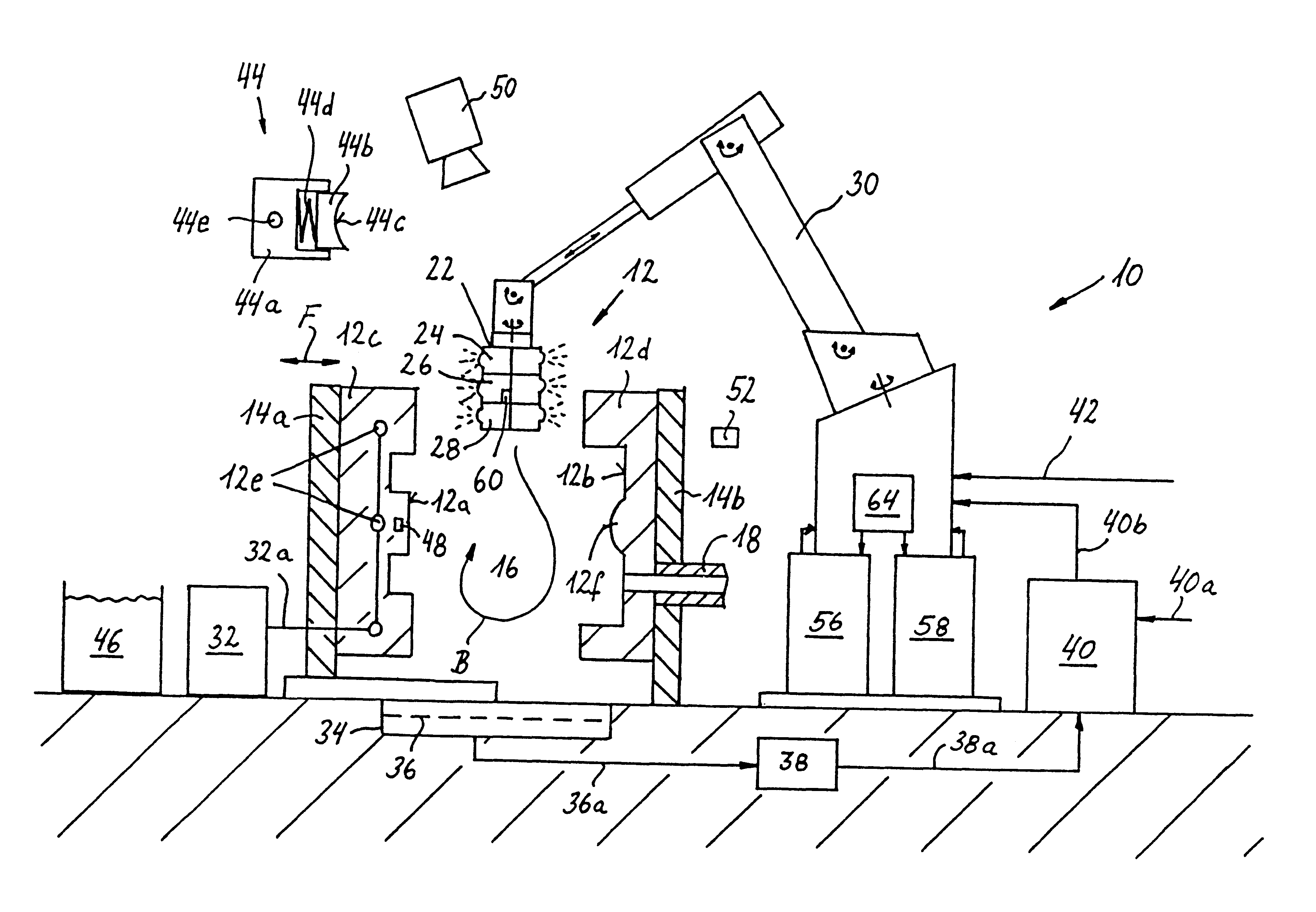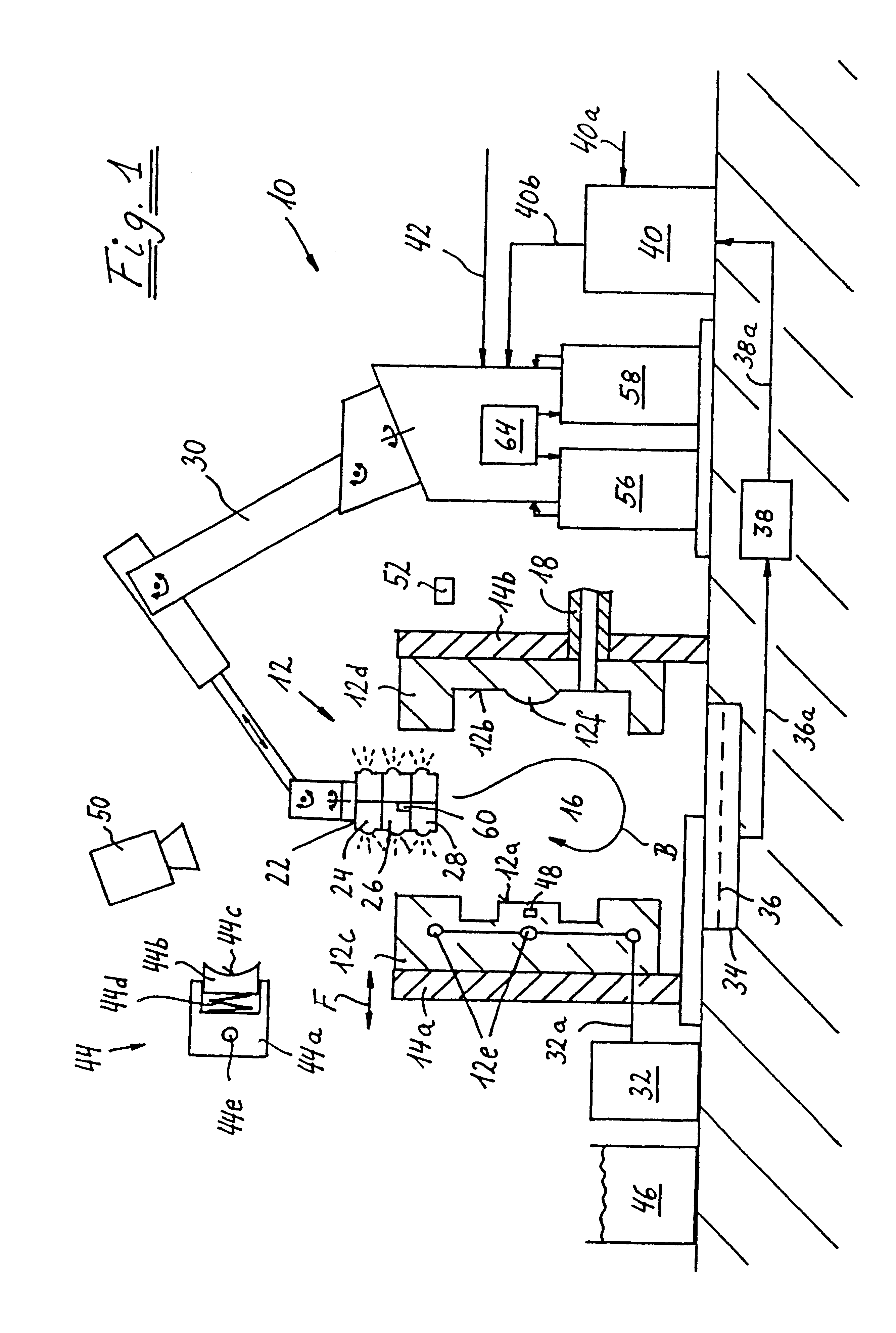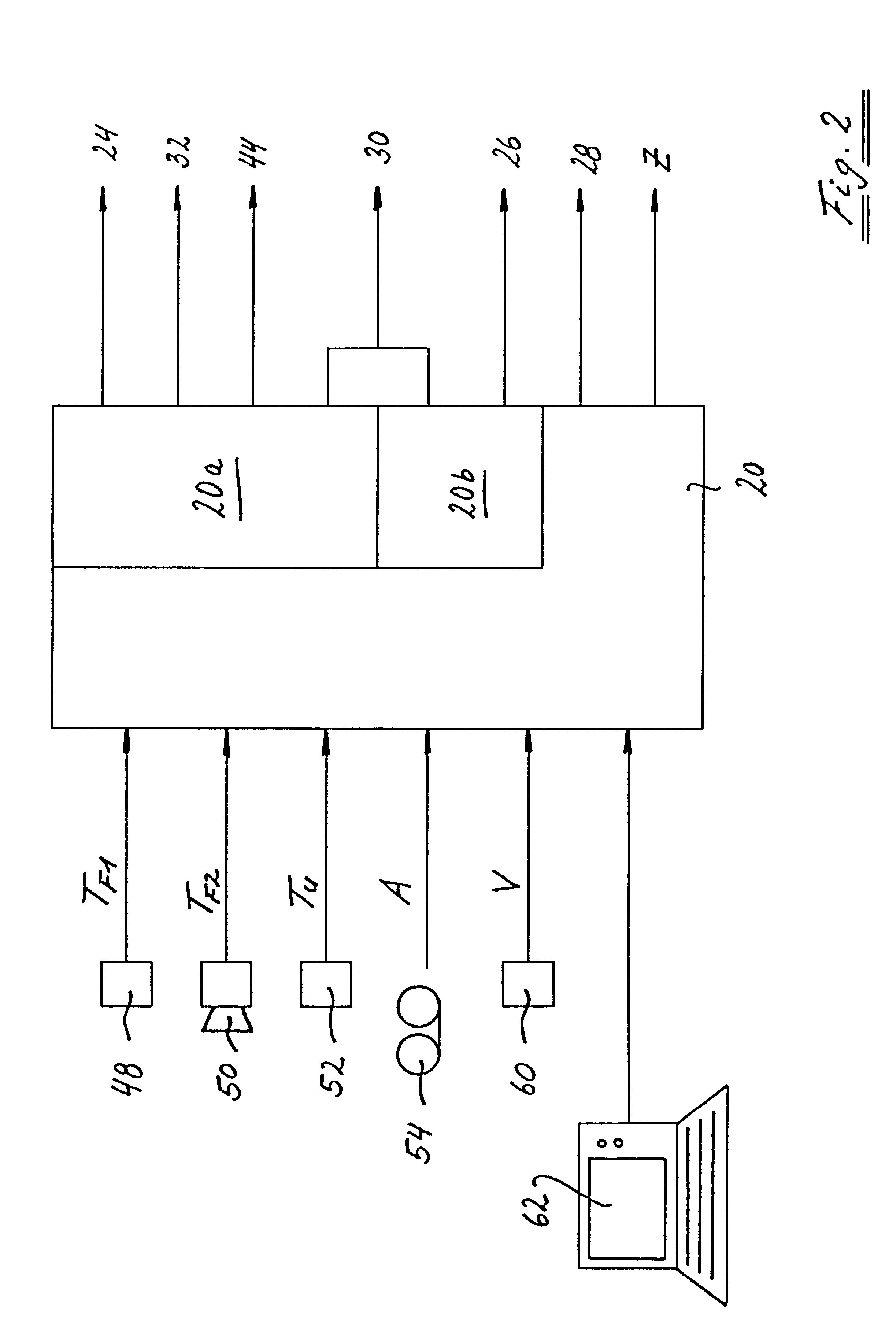Process for preparing the walls of a mold for molding or shaping to make them ready for the next molding cycle
a molding or molding technology, applied in the direction of manufacturing tools, foundry molds, foundry patterns, etc., can solve the problems of preventing the mold from being filled sufficiently, affecting the quality of castings, and affecting so as to improve the environmental compatibility of the process
- Summary
- Abstract
- Description
- Claims
- Application Information
AI Technical Summary
Problems solved by technology
Method used
Image
Examples
Embodiment Construction
As a result of the separation in time between tempering and coating, it is possible to allow each of the two component processes to proceed under the most favorable possible conditions for it alone, which has a favorable effect on the environmental compatibility of the process according to the invention.
First, the mold wall surface is cooled in a controlled manner under consideration of the process conditions and / or environmental conditions. This controlled cooling does not exclude the possibility that the coolant, preferably pure water, is applied in excess, at least in certain time intervals, to the mold walls to counter the Leidenfrost effect. As a result of cooling with an excess of water, a great deal of heat can be removed from the mold in a relatively short time, which makes it possible for the mold temperature desired for the next filling process to be approached quickly. During the final phase of the tempering process, however, the control of the cooling process makes it po...
PUM
| Property | Measurement | Unit |
|---|---|---|
| temperature | aaaaa | aaaaa |
| viscosity | aaaaa | aaaaa |
| flash point | aaaaa | aaaaa |
Abstract
Description
Claims
Application Information
 Login to View More
Login to View More - R&D
- Intellectual Property
- Life Sciences
- Materials
- Tech Scout
- Unparalleled Data Quality
- Higher Quality Content
- 60% Fewer Hallucinations
Browse by: Latest US Patents, China's latest patents, Technical Efficacy Thesaurus, Application Domain, Technology Topic, Popular Technical Reports.
© 2025 PatSnap. All rights reserved.Legal|Privacy policy|Modern Slavery Act Transparency Statement|Sitemap|About US| Contact US: help@patsnap.com



